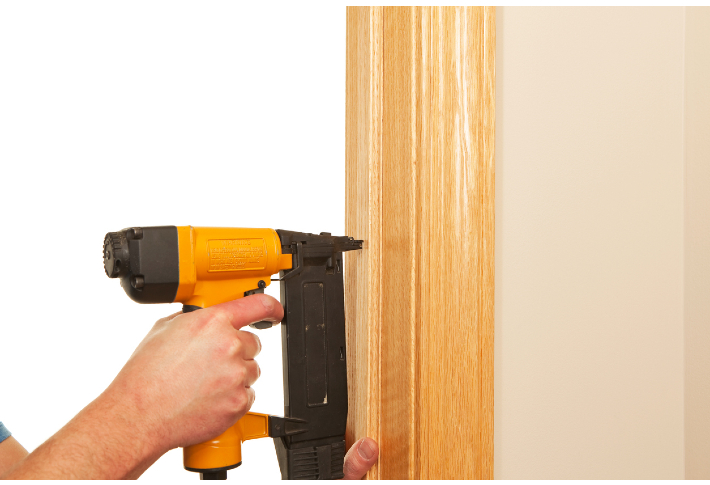Brad vs. Finish Nailers: The Best One To Get the Job Done

Unless you’re an experienced carpenter, you might not know how to differentiate a brad nailer from a finish nailer and which one is best for your next DIY home renovation project. Both nailers are valuable tools with distinct purposes in construction and completing specific jobs. Unfortunately, distinguishing the difference between these two premium power tools isn’t apparent to the average, but we’re here to break it down for you.
Deciding Between Pneumatic and Cordless Options
First, most professional carpenters prefer pneumatic nail guns, which use compressed air to mechanically function and drive nails into hard surfaces like wood, metal, or concrete. Although pneumatic nail guns are durable, they do require an air compressor, which can be an impractical option for projects in cramped surroundings and is more expensive than the alternative. Even though cordless tools are not as powerful as their pneumatic counterparts, they still get the job done and are a leading choice for effortless home renovations and DIY projects because of their portability and efficiency.
Here’s How They Are Different
Purpose and strength
Great for smaller and intricate projects, a brad nailer can be a woodworker’s best confidant. Available in battery-powered and pneumatic options, this tool delicately fastens pieces of lightweight wood with needlelike nails to prevent any splitting within the grain. Many find it a top choice for constructing birdhouses, canvas frames, decorative trims, and other elaborate projects.
If you need more power than your brad nailer can offer, then your best bet is to use your finisher nailer for the job. A finish nailer weighs a bit more than the brad nailer but is more powerful. As a result, it has a rugged holding capacity to secure thicker pieces of wood, making it a leading choice for more substantial projects like installing baseboards, crown moldings, and door casings. You can also find this nail gun available in cordless and pneumatic options, leaving it all up to preference and purpose.
Size of nails
One significant difference between a finishing nailer and a brad nailer is the size of the nails they require. Since brad nailers are meant for more delicate woodworking jobs, they use thin, 18-gauge nails with inconspicuous heads for aesthetic purposes. Although essential in some renovations, brad nails are less durable than finishing nails which can penetrate dense and hardwood.
Since a finishing nailer uses nails of a bigger diameter, they can be more destructive but offer great holding capacity. That is why they are great for larger projects and are quite versatile. It can also be used for smaller projects but would require more sanding and finishing. On the other hand, the brad nailer is perfect for delicate projects that require enough holding power but could be torn by a finishing nail.
Conclusion
Nail guns are essential tools that make home renovations effortless and efficient. Unfortunately, there isn’t a one-size-fits-all option in the construction world, and every project has specific requirements regarding durability, power, and detail. Both these nailers work great but differ in the type of nails they use, their application, and the effects during the process. For example, brad nailers are great for fine details and fastening thin and softer wood, whereas a finish nailer comes in and finishes the more demanding jobs that need more binding strength and driving power. We hope this made it easier for you to distinguish the difference between these two nail guns and which is the best one for your upcoming project.
